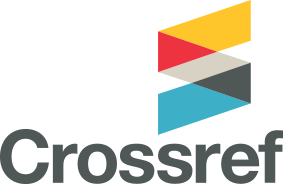The Reject Green Kale Substitution (Ipomoea Aquatica) Fermented Yeast in Commercial Feed on Performance and Carcass Quality of Super Native Chicken
Abstract
Keywords
References
Daud, M., & Zulfan, Y. M. (2015). The Use of The Green Kale (Ipomoea Aquatica) Probiotic Fermentation in Rations Against Peking Duck Performance. Proceedings of the 2015 National Seminar on Animal Husbandry and Veterinary Technology.
Domiszewski, Z., Bienkiewicz, G., & Plust, D. (2011). Effects of different heat treatments on lipid quality of striped catfish (Pangasius hypophthalmus). Acta Scientiarum Polonorum, Technologia Alimentaria, 10(3), 359–373.
Husmaini. (2000). Effect of increased protein and ration energy levels when refeeding on the performance of free-range chickens. Journal of Animal Husbandry and Environment, 6(1).
Lacy, M., & Vest, L. (2000). Improving feed conversion in broiler: a guide for growers.
Lapase, O. A., Gumilar, J., & Tanwiriah, W. (2016). Kualitas fisik (daya ikat air, susut masak, dan keempukan) daging paha ayam sentul akibat lama perebusan. Students E-Journal, 5(4), 1–7
Lawrie, R. (2003). Meat Science (Aminuddin’s (ed.); 5th ed.). University of Indonesia Publisher.
Merthayasa, J., Suada, I., & Agustina, K. (2015). Daya ikat air, pH, warna, bau dan tekstur daging sapi bali dan daging wagyu. Indonesia Medicus Veterinus, 4(1), 16–24.
Munira, S., Nafiu, L., & A.M, T. (2015). Super kampung chicken performance on feed substituted by fermented rice bran with different fermenters. JITRO, 3(2).
Nataamijaya, A. G. (2016). Karakteristik dan produktivitas ayam kedu hitam. Buletin Plasma Nutfah, 14(2), 85–89. https://doi.org/10.21082/blpn.v14n2.2008.p85-89
Nurcholis, Hastuti, D., & Sutiono, B. (2009). Management of layer laying laying chickens in the popular farm of kuncen village, mijen district, Semarang City. MEDIAGRO, 5(2).
Prasetyo, & Kendriyanto. (2010). Quality of Fresh Beef and Lamb Stored in Cold Temperature with Liquid Smoke Preservatives. National Seminar on Animal Husbandry and Veterinary Technology.
Pratama, A., Suradi, K., Balia, Roostita l, Chairunnisa, H., Lengkey, Hendronoto Aw, Sutardjo, D. S., Suryaningsih, L., Gumilar, J., Wulandari, E., & Putranto, W. S. (2015). Evaluasi karakteristik sifat fisik karkas ayam broiler berdasarkan bobot badan hidup. Jurnal Ilmu Ternak, 15(2), 61–64.
Prayitno, A. H., Edi, S., & Zuprizal. (2010). Physical and sensory quality of meat of broiler chicken fed with the addition of virgin coconut oil waste. Bulletin of Animal Science, 34(1), 55–63.
Rivai, F. (2001). Growth of Kampung Chickens, Pelung and Pelung Crosses of First Descendant Kampung (F1) Age 5-12 Weeks. Bogor Agricultural University.
Rumiyani, T., Wihandoyo, & Sidadolog, J. H. P. (2012). Pengaruh pemberian pakan pengisi pada ayam broiler umur 22-28 hari terhadap pertumbuhan, dan kandungan lemak karkas dan daging. Buletin Peternakan, 35(1), 38–49. https://doi.org/10.21059/buletinpeternak.v35i1.589
Soeparno. (1998). Meat Science And Technology. Gadjah Mada University Press.
Soeparno. (2005). Meat Science and Technology (4th ed.). Gadjah Mada University Press.
Soeparno. (2009). Meat Science and Technology (6th ed.). Gadjah Mada University Press.
Soeparno. (2011). Science of Nutrition for Meat Nutrition. Gadjah Mada University Press.
Steel, R. G., & Torrie, J. (1995). Statistics Principles and Procedures (B. Sumantri (ed.); 2nd ed.). Gramedia.
Winarso, D. (2003). Perubahan karakteristik fisik akibat perbedaan umur, macam otot, kombinasi waktu dan temperatur perebusan pada daging ayam kampung. Indonesian Trop Anim Agric, 28(3), 119–132.
Publication ID
DOI https://doi.org/10.21776/ub.jtapro.2020.021.01.1Refbacks
- There are currently no refbacks.

This work is licensed under a Creative Commons Attribution-NonCommercial 4.0 International License.










